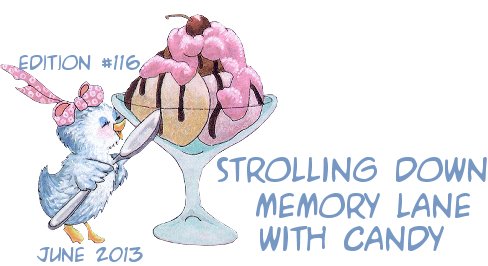

Let's find out how it all got started...
J.F. “Grandpa” McCullough and his son Alex McCullough were the proprietors of the Homemade Ice Cream Company in Green River, Illinois. Traditionally, ice cream was a mix of 10 percent butterfat, milk solids, sweetener, and stabilizers. It was combined with air and flavor in a batch freezer until it reached 23 F. Then the spigot would be opened and the ice cream would pour out into three-gallon tubs. The tubs were stored at –10 F. The hard ice cream was then delivered to the store owners. When the owner was ready to serve the ice cream it was warmed to –5 F in a dipping cabinet.
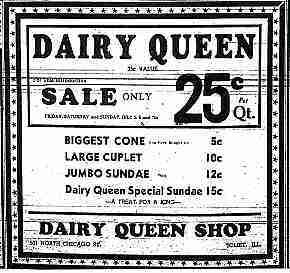
The freezing of the ice cream was for the convenience of the ice cream maker and seller, not the customer.
However, Grandpa McCullough knew that ice cream near 0 F. froze the taste buds and tasted better at 23 F when it was soft. Since the batch freezer that held the ice cream at 23 F would not be able to serve soft ice cream, a new freezer had to be made. First, Grandpa McCullough wanted to make sure that there was demand for the soft ice cream. They held an ‘All the Ice Cream You Can Eat for Only 10 Cents’ sale at good friend and customer Sherb Noble’s walk-in ice cream shop in Kankakee, Illinois. Serving over 1600 in only two hours, the sale was considered a success and Grandpa McCullough knew he had to find someone to produce this practical freezer.

In July, 1939, McCullough found Harry M. Oltz who had a patented custard machine that could generate McCullough’s soft serve ice cream. The two came to an agreement that allowed McCullough to use the machines in his store, but gave Oltz the freezer patent and print rights and a 12% profit from every batch of ice cream made with the machine. The Stoeling Brothers Co. agreed to manufacture the machine. Playing with the ice cream recipe McCullough discovered that using only 5-6% butter fat, rather than the standard 10% tasted better. In addition he found that the ice cream held its shape and tasted better at 18 F.
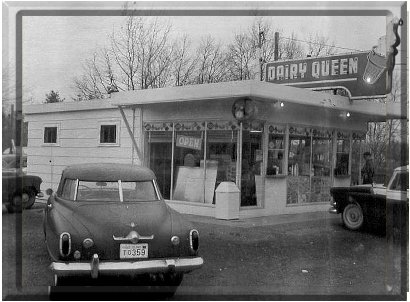
By June 22, 1940, McCullough was ready to open the first Dairy Queen with the new product and new freezer. Co-owned with Herb Noble, the store in Joliet, Illinois was named Dairy Queen, because it was ‘a queen among dairy products and the epitome of freshness and wholesomeness’. Eight more stores were opened however World War II impacted Dairy Queen by slowing production. Harry Axene convinced Grandpa McCullough to make him a 50-50 partner and to sell him the territory rights to Iowa and Illinois. Axene distributed the rights to use the freezer along with the Dairy Queen name and collected royalties in exchange. Thus, he was responsible for starting the idea of franchising, as we know it today. At this point nothing was standardized. Each territory owner decided what kind of food to serve, what hours to operate, what the Dairy Queen sign looked like, and what supplies to use.
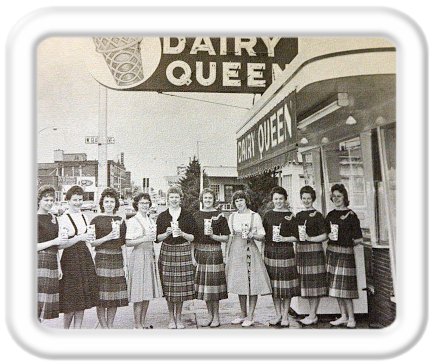
The consistent similarity from store to store was the name and this patented freezer. Territory owners were not able to take advantage of group purchasing or national advertising. In 1946, Axene called a meeting of territory operators to form the Dairy Queen National Trade Association (DQNTA). Members would be able to share ideas and supply sources. However, the group did not have formal power so the policies that they implemented were not enforceable. John Cruikshank set out to find a system that would work in all stores. In 1961, Brazier, named by an ad agency, was introduced as a standard food system serving hotdogs, burgers, fries, barbecued beef, and onion rings. Several stores adopted the system, yet it was up to the territory operators to implement Brazier. Several complaints came from DQNTA members that they were being over charged for supplies, thus a few powerful territory operators teamed to form Associated Dairy Queen.
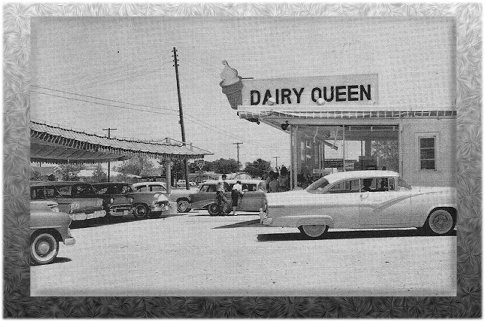
More controversy exploded in 1964, when the freezer patent expired. Territory operators questioned whether they should continue to pay royalties. The dispute was battled in court for eight years. However, it was argued that the franchise rights included the right to use the trade name and therefore, should have to pay to continue to use it. The actual owner of the name became yet another controversy. Grandson Hugh McCullough disputed the claims and tried to register the Dairy Queen name that his grandfather had coined. However, some of Axene’s territory operators thought that in buying Grandpa McCullough’s original Homemade Ice Cream Shop, Axene was also buying the shop’s new name, Dairy Queen. After years in court the dispute was settled when Hugh McCullough agreed to sell his rights to the Associated Dairy Queen, which then formed IDQ.
McCullough received $1.5 million in cash for his territories and the Dairy Queen name.

The first Dairy Queen store received local landmark status in 2010, which should help people realize Joliet’s importance in the birth of the ice cream giant that today has 5,900 locations in the U.S. and 21 other countries.
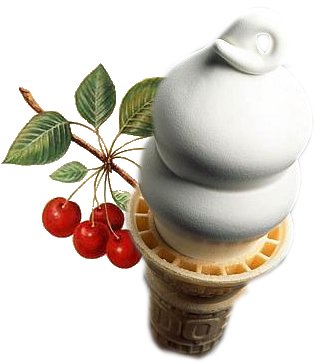
There's a rumor that we might even be getting one in New York City..finally! I for one don't like all those commercials on TV talking about DQ...it's DAIRY QUEEN! Quit trying to modernize it....But one thing for sure I know it's the real deal when my cone has the curly Q on top!
I don't know about y'all but after this stroll...I'm hungry!
